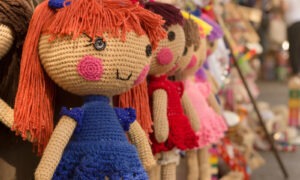The fear of ventriloquist’s dummies is known as Automatonophobia: people who suffer from tension, emotional upset and stress while in the presence of such marionettes will do anything to avoid triggers. This phobia may also include a fear of animatronic creatures and/or wax statues.
Reasons For This Phobia
Automatonophobia is usually a response to the “creepy” nature of man-made marionettes and models. Like those who suffer from the fear of puppets, people who fear ventriloquist’s dummies will be repelled by the similarities between real people and the dummies and statues that resemble them. Some people find such models “cold” and “disturbing”.
The glass eyes and other elements that comprise dummies and statues will provoke a feeling of unease and tension.
Famous Triggers
Famous puppets, such as Mortimer Snerd, who was the creation of comedian and ventriloquist Edgar Bergen, is often cited as a trigger for this phobia. His other famous dummy, Charlie McCarthy, once appeared on the cover of Time Magazine.
Famous dummies such as these often banter with their ventriloquists onstage, trading quips and even insults. This type of repartee and badinage may also be off-putting to people with Automatonophobia.
Are Wax Statues “Creepy”?
People who fear wax statues will be likewise repulsed by their similarities to real human beings. They will avoid popular tourist attractions, such as Madam Tussaud’s Wax Museum, where celebrities and noted historical figures are reproduced in unerring detail. While many people enjoy the perfect renderings of stars they will probably never get to meet, others would rather run for the exit.
For some people, there is something a bit dark and sinister about these depictions, since they are so still, so lifeless. For those with this phobia, the statues may seem to stare them down.
People prone to “magical thinking” may be more susceptible to this phobia. Magical thinking is sometimes associated with certain personality disorders, and it can give objects more power than they really deserve.
Assigning traits and behaviors to marionettes and wax figures, and believing they have some sort of dark power, would be one example of magical thinking.
Those who fear animatronic figures, such as those found at amusement parks (not people wearing costumes, but moving, electronic figures) and in films, will also suffer from Automatonophobia.
For example, the animatronic shark used in the Jaws films was a prime example of a trigger for this phobia. The shark, while not completely believable to some, seemed terribly real to many.
Animatronics May Be A Trigger
Today, animatronic designs are everywhere. Even toy stores sell animatronic dolls to children. For those with this phobia, these toys and models will be avoided. They will stay away from films, TV shows, and mass media ads that rely on animatronics. However, in today’s world, it’s very difficult to avoid these man-made representations of mythical creatures, animals, and people.
People with this phobia will become panicky and tense around dummies, wax statues, and animatronics. They may be specifically afraid of one, or all, of these types of figures. Nausea, dizziness, a desire to escape, and a feeling of doom will be prevalent in their reactions. Some people will feel paralyzed with fear around triggers.
Psychotherapy and medication can ease the worst elements of Automatonophobia. There may be some childhood memories at play here, triggering fears. Sometimes, children cannot tell fantasy from reality. If an encounter with a scary toy or figure occured in childhood, it may have provoked nightmares and terror.
These sorts of memories can lie buried in the subconscious, surfacing when triggers are around. Figuring out why you fear these inanimate objects may be the first step to getting better.
Other Names For The Fear Of Ventriloquist’s Dummies –
Fear of Dummies
Fear of Ventriloquists




















